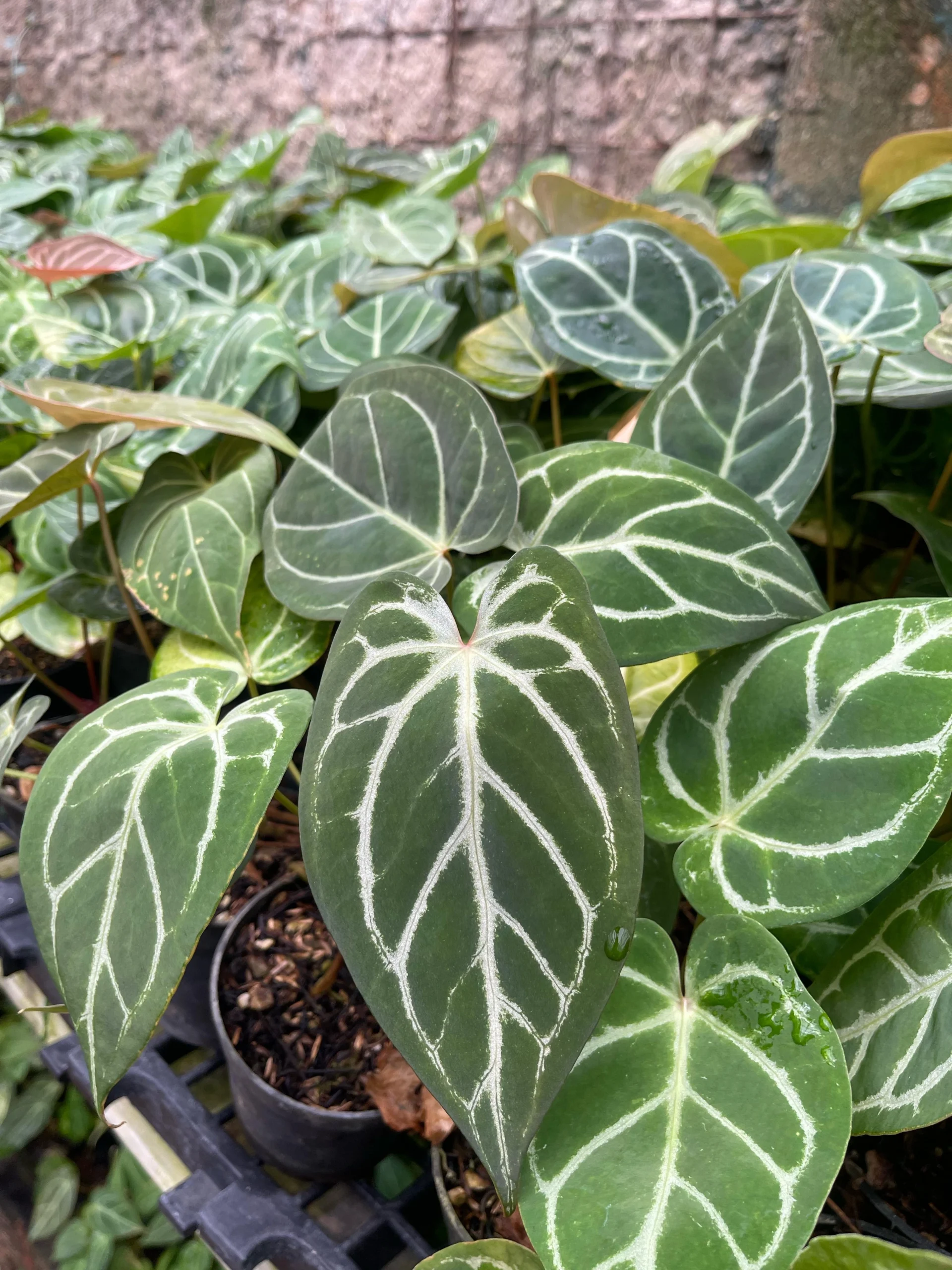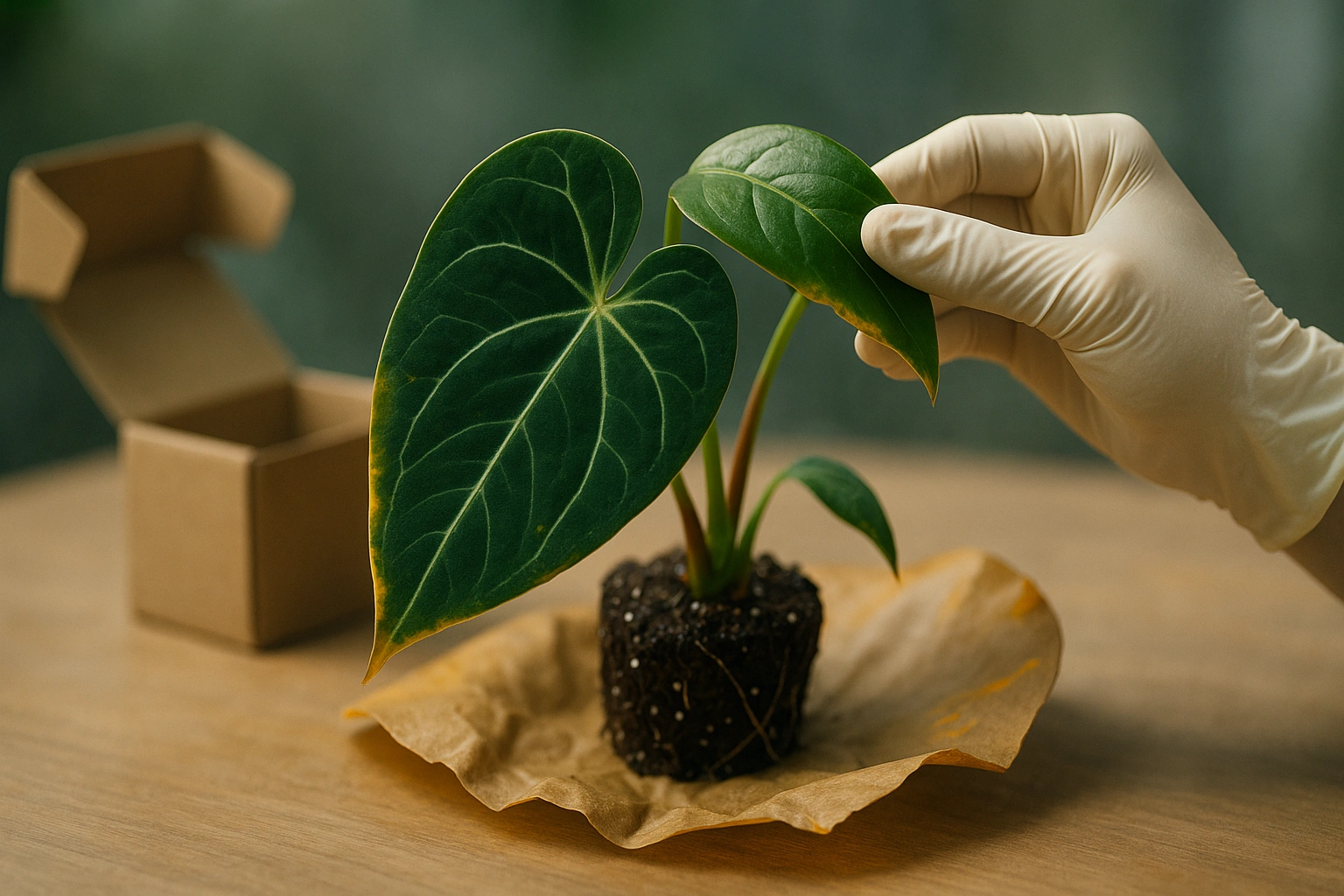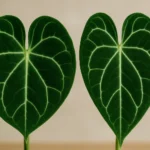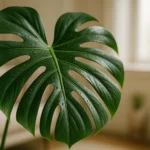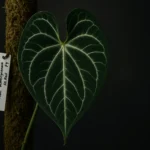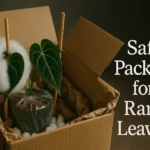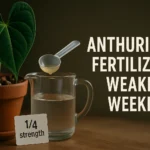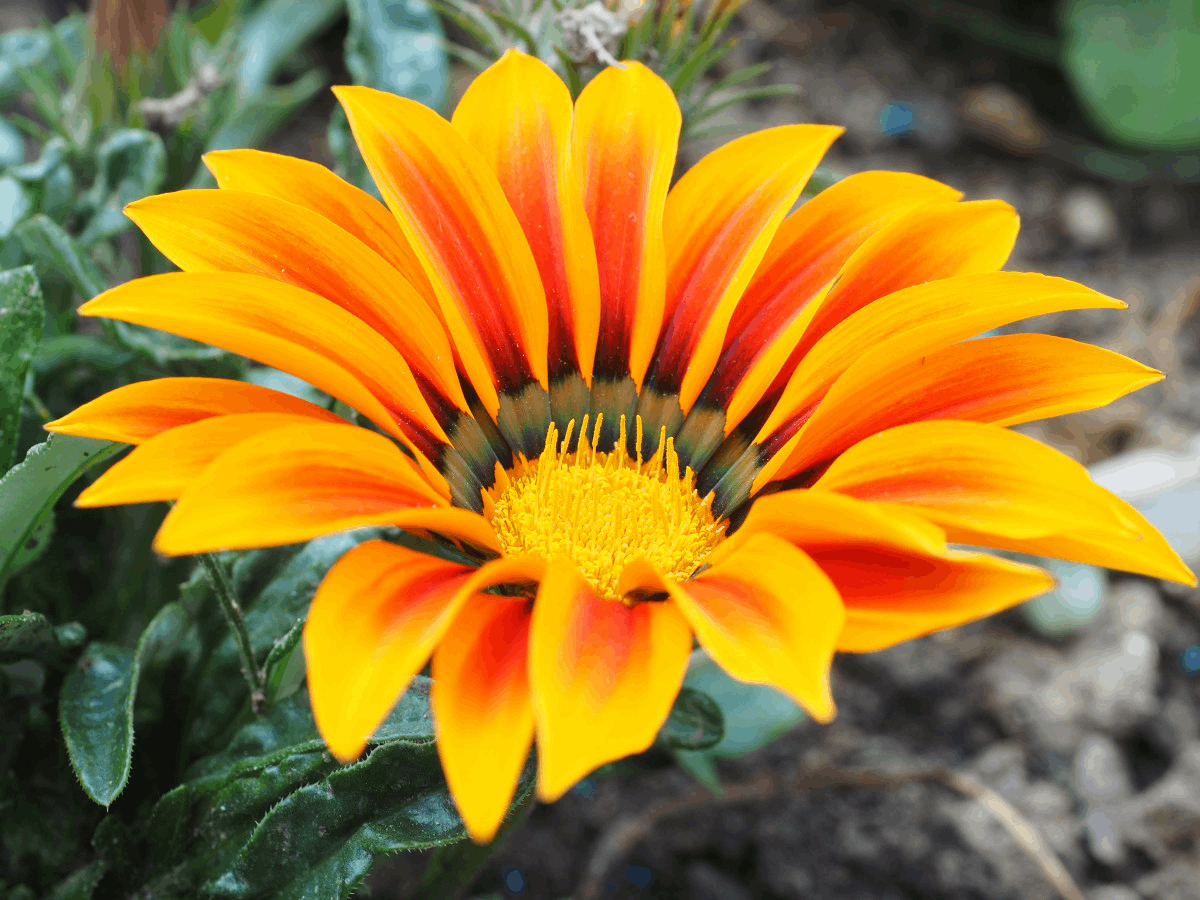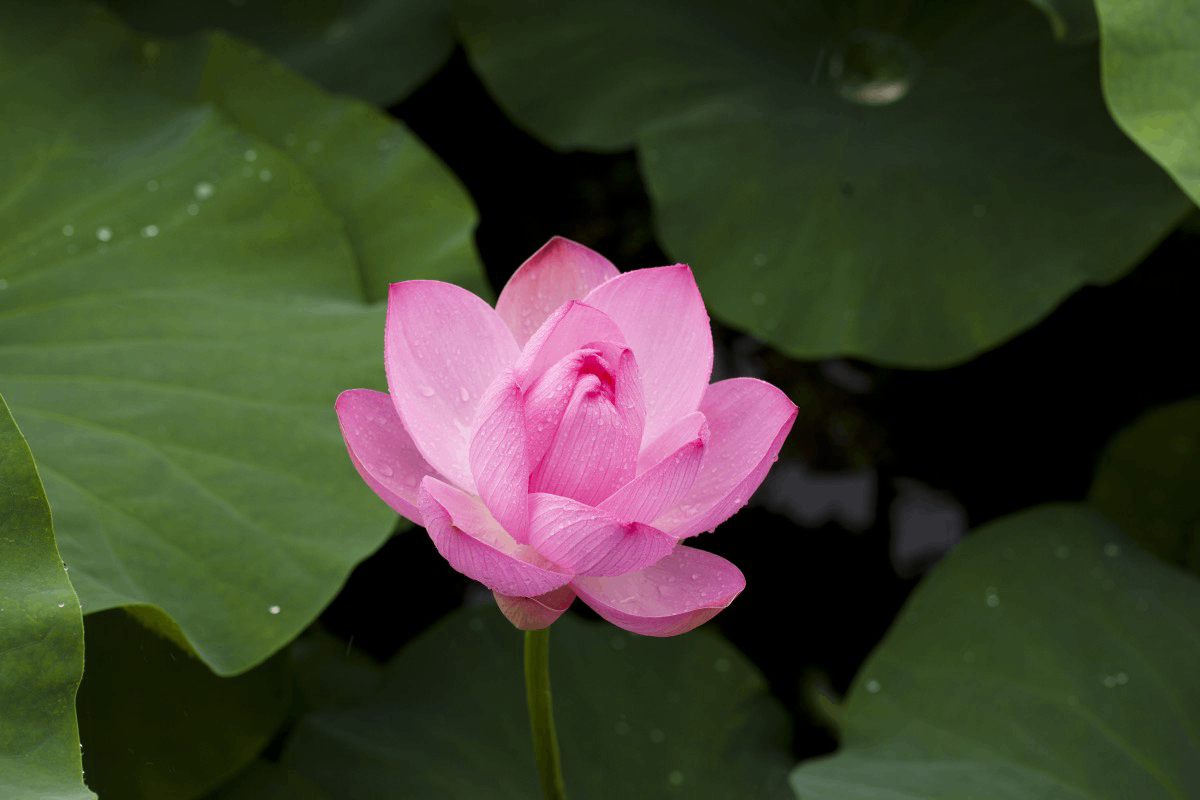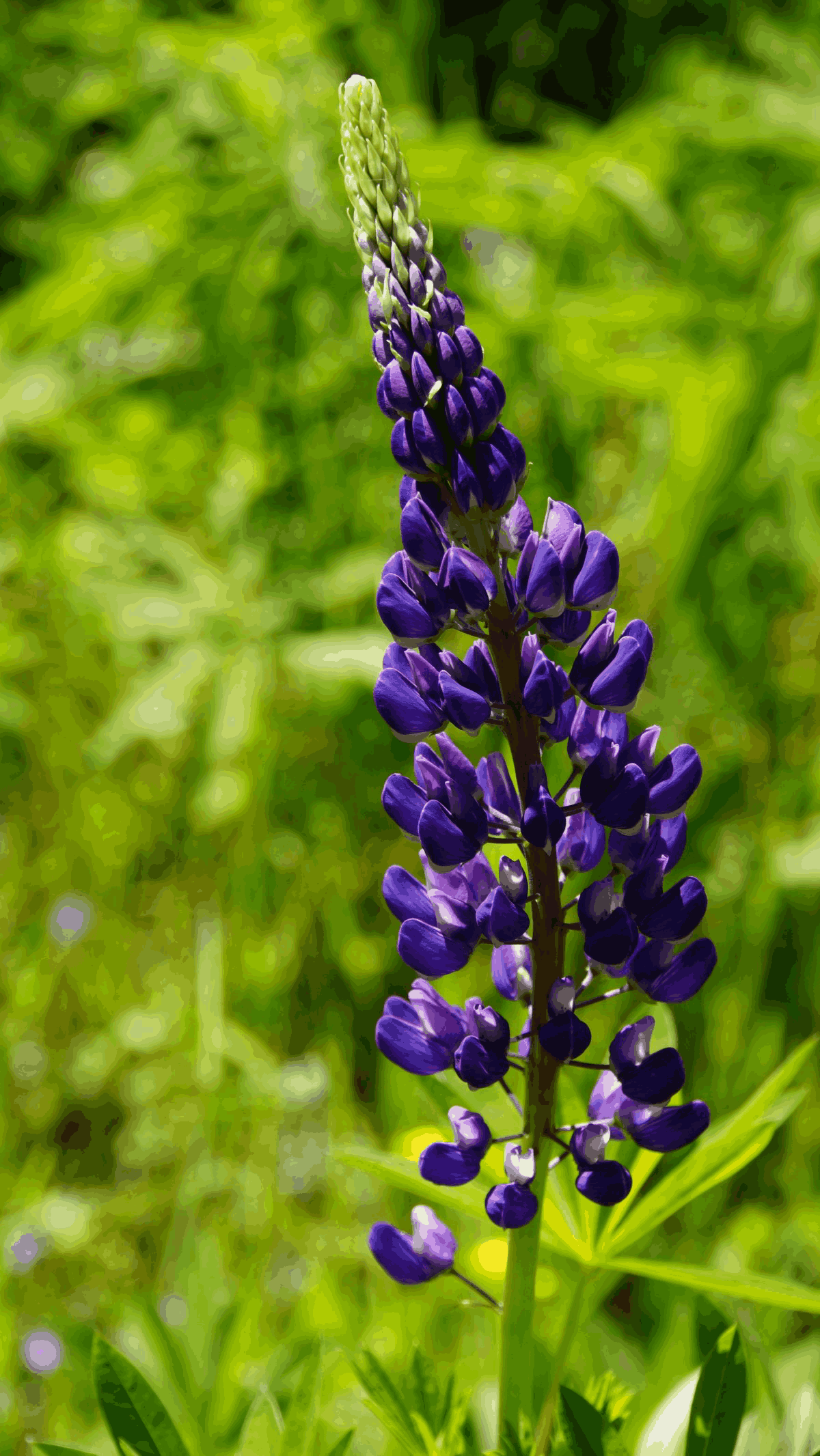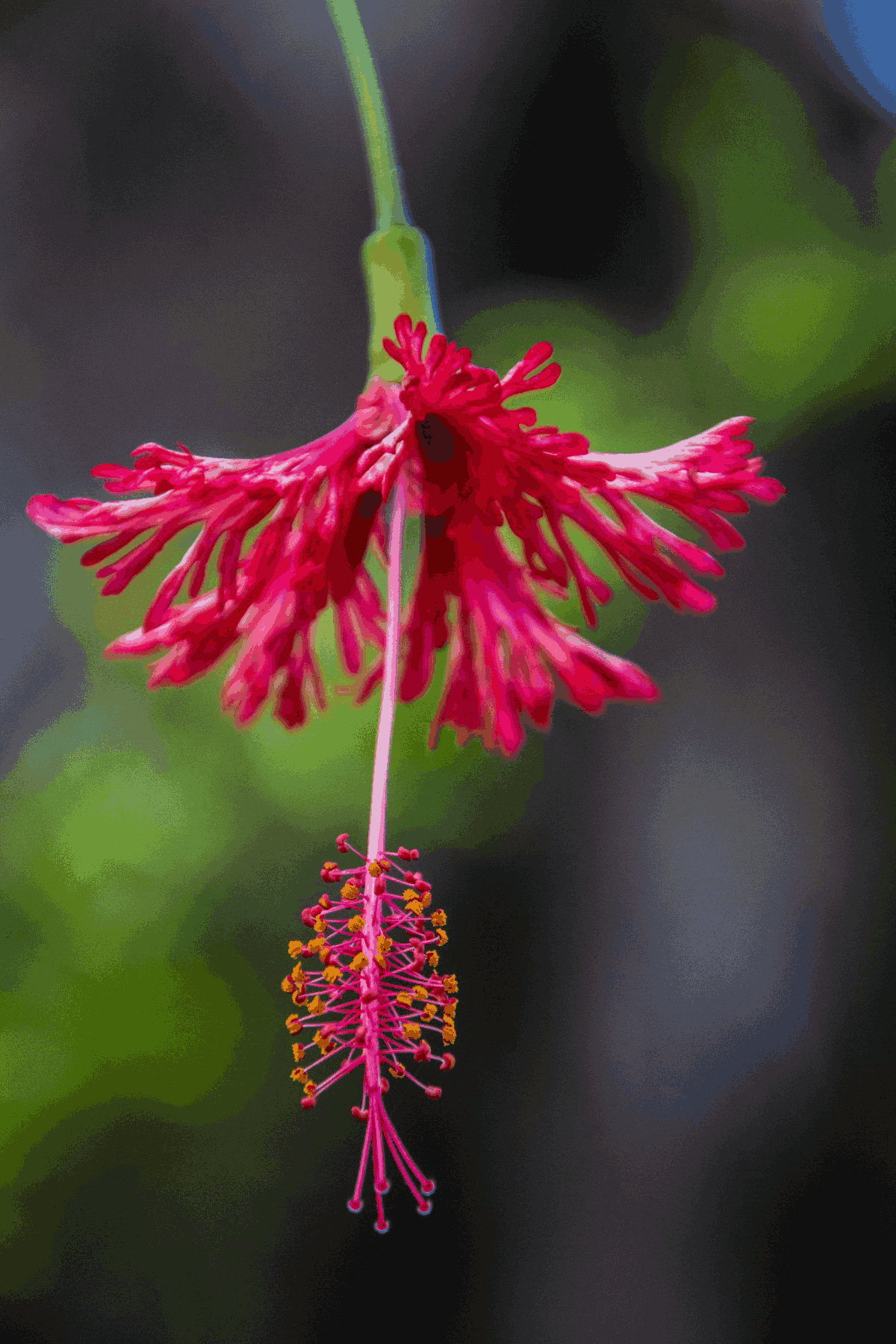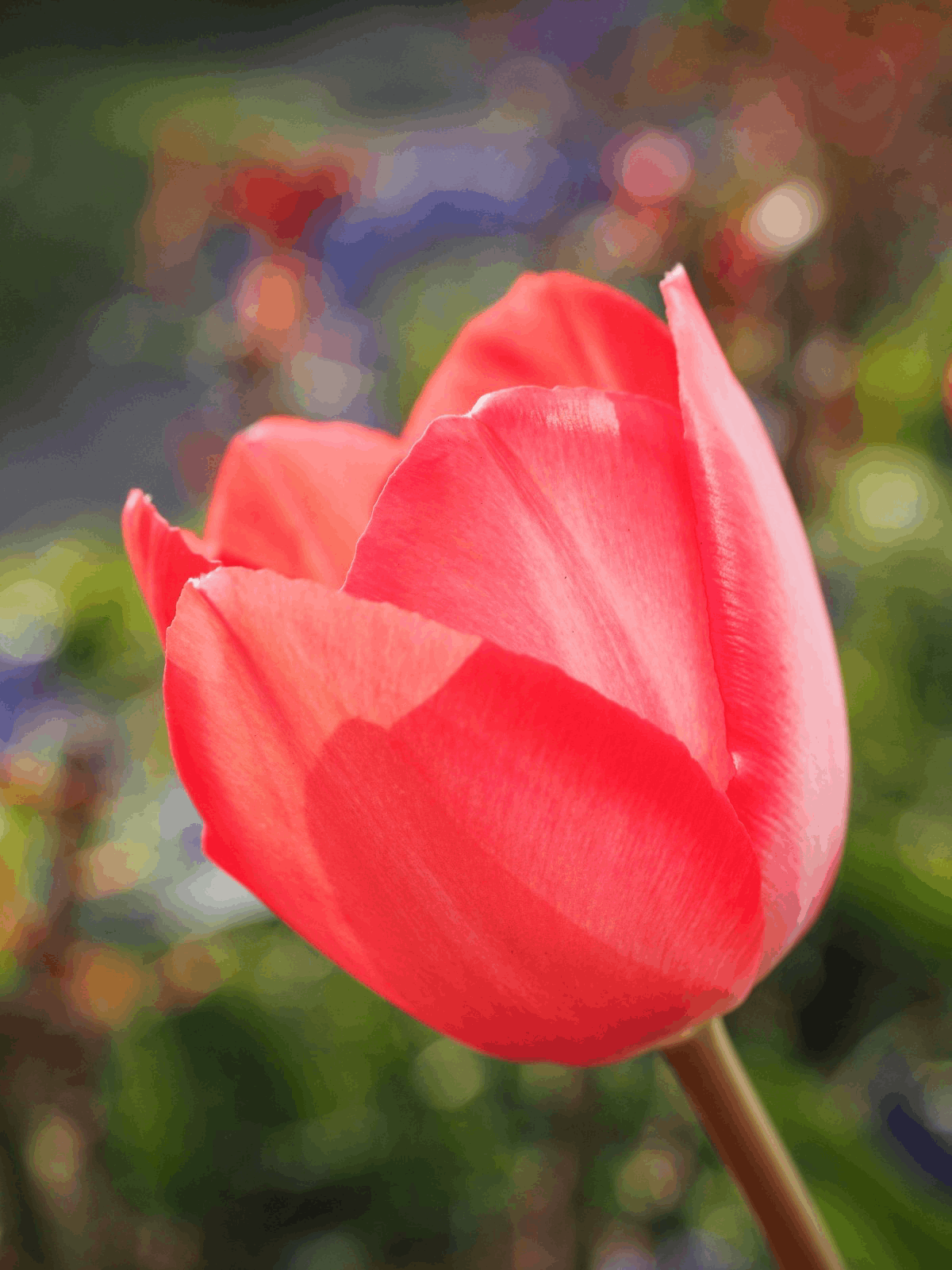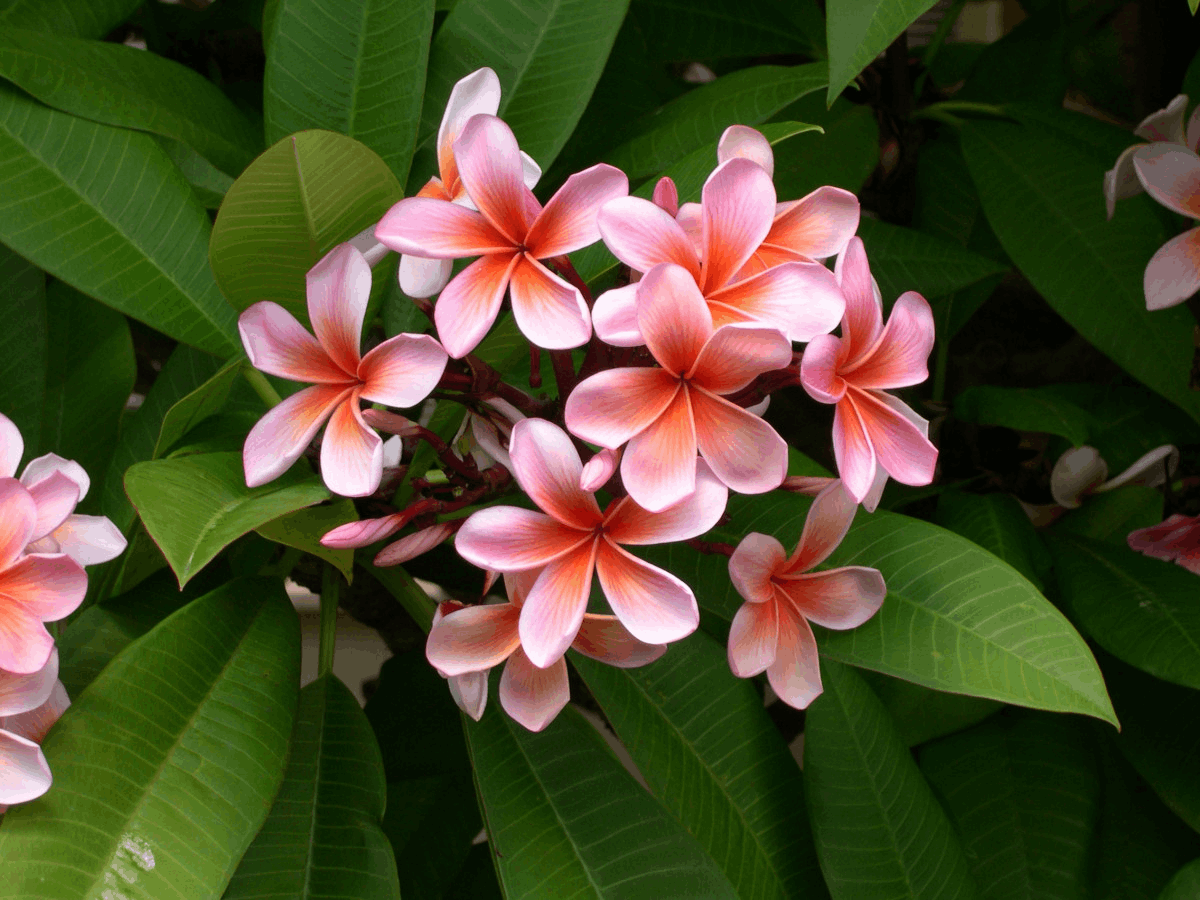GreenWandering
Discover the world’s most unique leaves.
The Post-Unboxing Disappointment
What is True Anthurium Leaf Health?
True **anthurium leaf health** is more than just the absence of pests; it’s a visible sign of a plant with a robust internal system. It means the plant has strong roots, is photosynthesizing efficiently, and has the energy reserves to produce stunning new foliage. It’s the external manifestation of a healthy vascular system, capable of transporting water and nutrients effectively from the roots to the furthest leaf tip. These plants, part of the diverse Anthurium genus within the Araceae family, are native to the tropical Americas, a fact you can verify with resources like Kew’s Plants of the World Online. A healthy specimen will feel turgid and firm, with a vibrant, even coloration (even on variegated varieties).
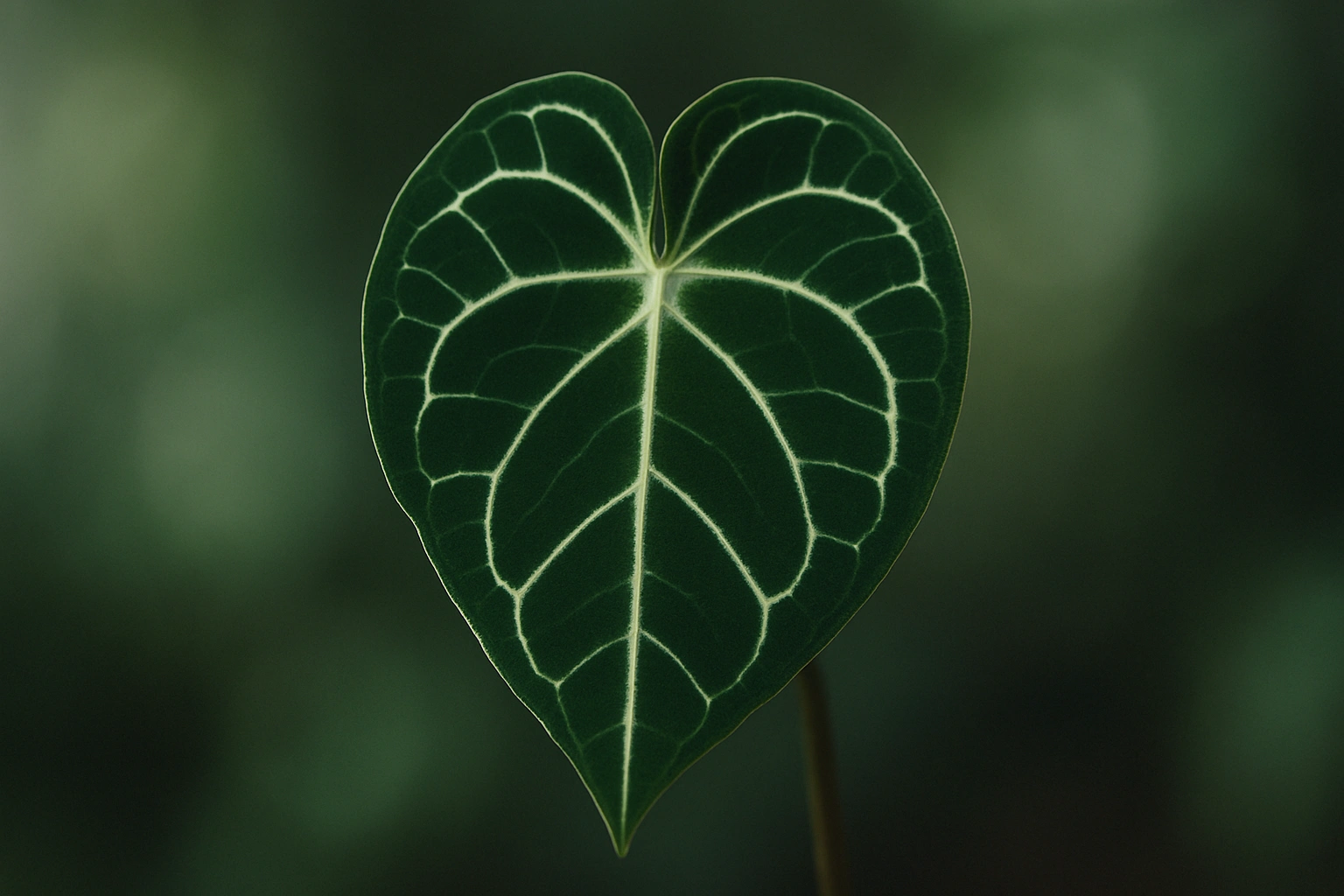
The 7-Point QC Checklist for Healthy Houseplants
1. Leaf Condition: Turgor, Color, and Sheen
Gently feel the leaves. They should be firm, plump, and somewhat rigid (turgid). This indicates the plant’s cells are full of water and it is well-hydrated. Limp, floppy, or wrinkled leaves are a sign of underwatering or a compromised root system that can no longer absorb water effectively. The color should be deep and even for green varieties. For variegated plants, the colors should be crisp and distinct, not muddy. The leaf surface should have a healthy, natural luster, not a dull, dusty appearance, which can indicate stress or the presence of pests like spider mites.
2. Pest Inspection: The Underside is Key
This is the most critical step for maintaining a **pest-free** collection. Pests love to hide in crevices. Inspect every part of the plant, but pay special attention to the undersides of leaves, the points where the petiole (leaf stalk) meets the leaf, and within the cataphylls (the papery sheath around new growth). Look for webbing (spider mites), tiny moving specks (thrips, mites), white cottony masses (mealybugs), or sticky “honeydew” (aphids). A small magnifying glass or your phone’s camera zoom is essential for this step. Don’t rush it; a few overlooked pests can lead to a full-blown infestation.
3. Root System Health: A Peek Below
You can’t always see the roots, but if you can, look for ones that are white or light green and fleshy. These are new, active roots. Brown, mushy, or stringy roots are a sign of rot, a deadly condition for anthuriums. If the plant is in a clear pot, this is easy. Otherwise, check the drainage holes. Healthy roots peeking out are a good sign of a vigorous plant. A solid mass of circling roots means the plant is pot-bound and will need repotting soon, which is a manageable stress but something to be aware of.
4. New Growth and Active Nodes
Look for signs of active growth. Is there a new leaf unfurling or a “spear” emerging from the plant’s core? This is the best indicator that the plant is healthy and actively growing, not just surviving. The new growth should look pristine. Also, check the nodes along the stem for any signs of swelling or “bumping up,” which indicates where future growth points or aerial roots could emerge. This signals a plant with strong potential for future growth and propagation.
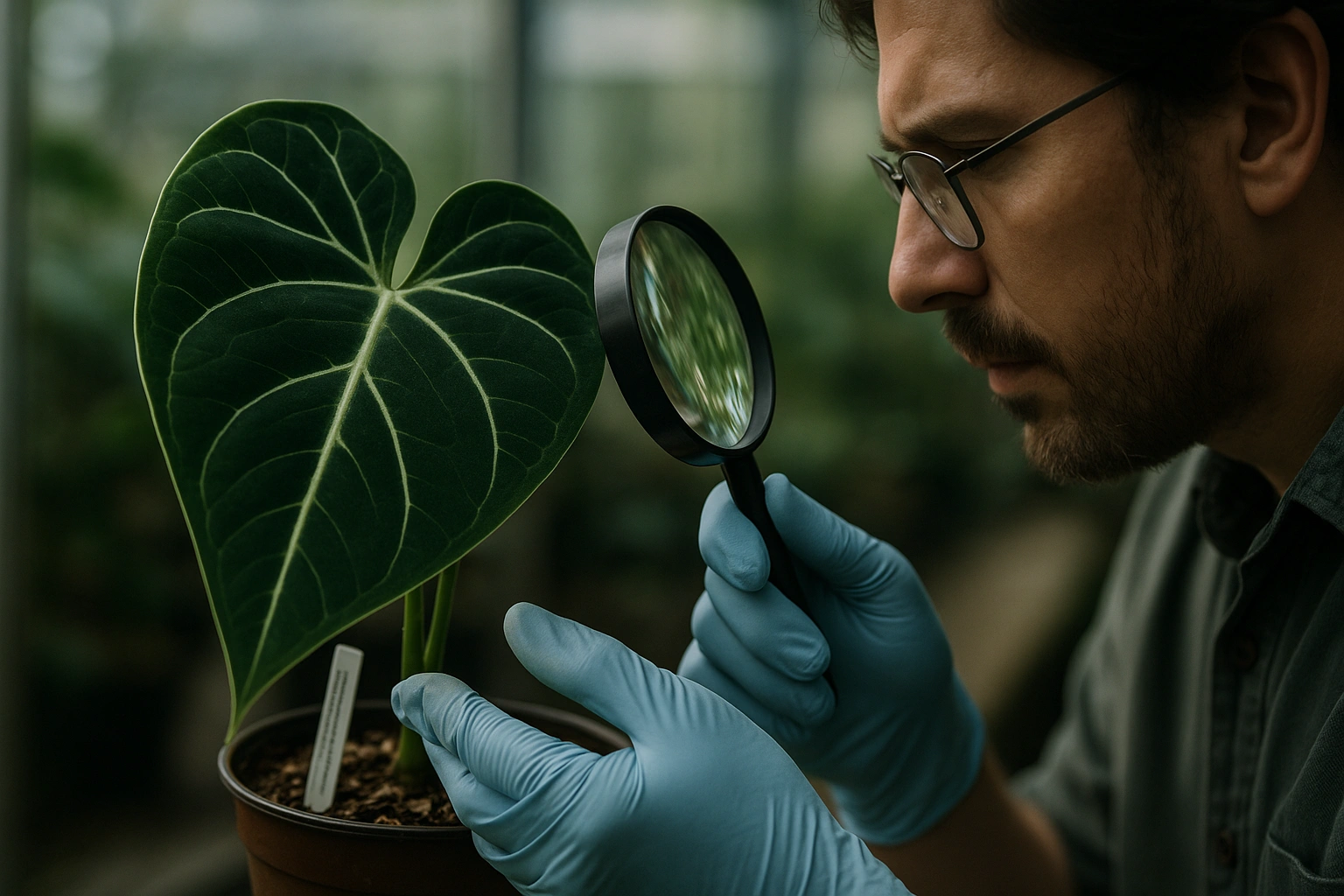
5. Stem and Petiole Integrity
The stems and petioles should be strong and self-supporting. Gently squeeze the base of the stem near the soil line; it should be completely firm. Any soft, mushy spots on the stem are a major red flag for rot, which can quickly kill the entire plant. For variegated anthuriums, check the stem for coloration, as discussed in our variegation stability guide, as this indicates stability.
6. Overall Symmetry and Form
Does the plant have a balanced shape, or is all the growth leaning heavily to one side? While not a health crisis, poor form can indicate that the plant was not grown in ideal light and had to stretch to find it. This is correctable over time by rotating the plant regularly, but a well-formed plant from the start is a sign of a diligent grower.
7. Differentiating Shipping Stress from Chronic Issues
It’s vital to know the difference. A small amount of cosmetic damage, like a bent leaf, a slightly dry edge, or minor soil spillage is normal after shipping. However, widespread yellowing, soft rot at the base, or an active pest infestation are chronic problems that existed long before the plant was boxed up. A reputable seller’s plant will arrive looking stressed but fundamentally healthy.
Decoding Common Leaf Blemishes
- Yellowing Leaves (Chlorosis): This is most often caused by overwatering. The soil is staying too wet, suffocating the roots so they can’t absorb nutrients. It can also be a sign of a nitrogen deficiency, which typically starts on the oldest leaves first.
- Brown, Crispy Edges: The classic sign of low humidity. The air is too dry, causing the leaf to lose water faster than the roots can absorb it. It can also be caused by inconsistent watering or high salt buildup from tap water.
- Soft, Dark Brown/Black Spots: This often points to a fungal or bacterial infection, which is exacerbated by low airflow and overly wet conditions. These spots may feel mushy and sometimes have a yellow halo around them.
- Physical Damage: Clean tears or creases are usually mechanical damage from shipping or handling. Ragged edges, patterns of tiny dots (stippling), or silvery tracks suggest pest damage.
Proactive Care for Flawless Foliage
Maintaining pristine **anthurium leaf health** after your initial inspection comes down to consistent, mindful care. For in-depth guidance, sources like the RHS provide a wealth of information. Think of your environment as a system where each element supports the others.
- Airflow is Crucial: This is an often-underestimated factor. Good air circulation helps leaves dry after watering, strengthens stems, and significantly reduces the risk of fungal and bacterial issues from taking hold. A small, gentle fan in your plant room can work wonders.
- Bright, Indirect Light: The right light is the engine for a healthy plant. It fuels strong growth and helps the plant resist pests and diseases. Too little light leads to weak, leggy growth and smaller leaves. Too much direct sun will scorch the foliage.
- Well-Draining Soil: Use a chunky aroid mix (containing orchid bark, perlite, coco coir, etc.) that allows roots to breathe. This is your best defense against overwatering and the deadly threat of root rot. The soil should be moist but never soggy or waterlogged.
- Consistent Watering: Water thoroughly when the top 1-2 inches of soil are dry. Let water run out of the drainage holes, then discard the excess. Don’t let the plant sit in a saucer of water.
The Critical First Two Weeks: Acclimation Plan
How you treat a new plant in the first fortnight sets the stage for its long-term success.
- Quarantine (Always!): For at least two weeks, keep your new arrival completely separate from your other plants. This prevents any potential hidden pests from spreading.
- Inspect Again: Give it another thorough pest check after a day or two out of the box.
- Go Easy on Light: Place it in medium, gentle indirect light. Don’t put it in your brightest spot immediately. Let it recover from the darkness of the shipping box.
- Hold the Water: Shipping is often a wet process. Check the soil moisture, but do not water until the top layer is appropriately dry.
- Boost Humidity: Place it near a humidifier or on a pebble tray. High humidity helps reduce stress on the leaves.
- No Repotting or Fertilizing: Do not repot or fertilize a new plant for at least a month. It needs time to acclimate to its new environment without the added stress of a repot.
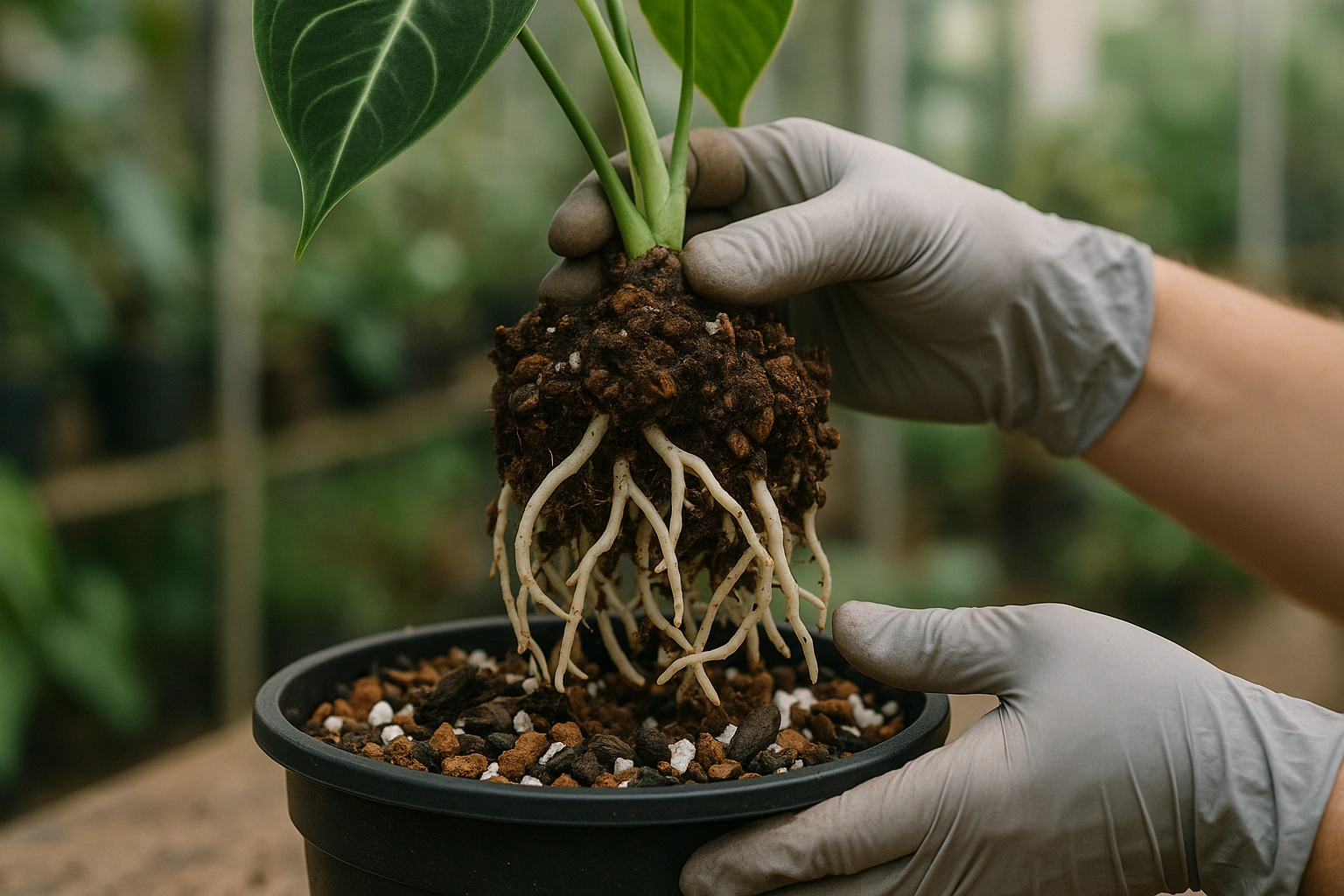
Frequently Asked Questions (FAQ)
What are the little white specks on my anthurium leaves?
Little white specks could be several things. If they are mobile, they are likely pests like spider mites or thrips. If they are stationary and can be wiped off, it could be hard water residue or harmless mineral deposits (guttation). Always inspect with a magnifying glass to be sure.
Why are my new anthurium leaves smaller than the old ones?
Smaller new leaves are often a sign of insufficient light. The plant doesn’t have enough energy to produce large foliage. It can also be caused by a lack of nutrients or the need for a repot. Assess its light conditions first, as that is the most common cause.
Is it normal for the oldest leaf to turn yellow and die?
Yes, it is perfectly normal for a healthy anthurium to occasionally shed its oldest, lowest leaf as it directs energy towards new growth. However, if multiple leaves are yellowing at once, it’s a sign of a potential issue, usually overwatering.
Can a damaged anthurium leaf heal itself?
No, plant leaves cannot heal from physical damage like tears or holes in the way human skin can. The damage will remain for the life of the leaf. The plant’s energy is better spent producing new, healthy leaves rather than repairing old ones.
How do I clean my anthurium’s leaves?
Use a soft, damp cloth with room-temperature water to gently wipe the top and bottom of each leaf. This removes dust, which can block light and harbor pests. Avoid using leaf shine products, as they can clog the leaf pores (stomata).
What’s the difference between shipping damage and a pest problem?
Shipping damage is typically mechanical—think creased, bent, or torn leaves from being jostled in a box. Pest damage often has a pattern, such as stippling (tiny dots) from mites, silvery trails from thrips, or sticky residue (honeydew) from aphids.
Conclusion: Your Foundation for a Thriving Collection
